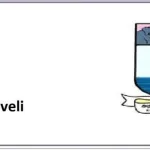Here are 50 sample questions and answers related to the number system. Since this topic belongs only to mathematics, I have created all 50 questions from that subject, in plain text without formulas or complex symbols.
What is the smallest natural number?
The smallest natural number is 1.
What is the largest single-digit number?
The largest single-digit number is 9.
Which number is known as the identity for addition?
The number 0 is the identity for addition.
Which number is called the multiplicative identity?
The number 1 is the multiplicative identity.
What are whole numbers?
Whole numbers are all natural numbers including zero.
What are even numbers?
Even numbers are divisible by 2 like 2, 4, 6, 8.
What are odd numbers?
Odd numbers are not divisible by 2 like 1, 3, 5, 7.
What are prime numbers?
Prime numbers are numbers greater than 1 with only two factors, 1 and itself.
What are composite numbers?
Composite numbers are numbers that have more than two factors.
Is 1 a prime number?
No, 1 is neither prime nor composite.
What is the smallest prime number?
The smallest prime number is 2.
What is the smallest composite number?
The smallest composite number is 4.
What are co-prime numbers?
Co-prime numbers are numbers whose greatest common divisor is 1.
What are consecutive numbers?
Consecutive numbers are numbers that follow each other in order without gaps.
What are twin primes?
Twin primes are two prime numbers that differ by 2 like 11 and 13.
What is the place value of 5 in 352?
The place value of 5 in 352 is 50.
What is the face value of 7 in 478?
The face value of 7 in 478 is 7.
What is the predecessor of 100?
The predecessor of 100 is 99.
What is the successor of 250?
The successor of 250 is 251.
What is the sum of the first 10 natural numbers?
The sum is 55.
What is the sum of the first 5 odd numbers?
The sum is 25.
What is the sum of the first 5 even numbers?
The sum is 30.
What is a palindrome number?
A palindrome number reads the same backward and forward like 121.
What is the greatest two-digit number?
The greatest two-digit number is 99.
What is the smallest three-digit number?
The smallest three-digit number is 100.
What is the largest three-digit number?
The largest three-digit number is 999.
What are prime factors?
Prime factors are prime numbers that divide a number exactly.
What is the prime factorization of 12?
The prime factorization of 12 is 2 × 2 × 3.
What is the HCF of 18 and 24?
The HCF of 18 and 24 is 6.
What is the LCM of 5 and 7?
The LCM of 5 and 7 is 35.
What is the smallest prime number greater than 50?
The smallest prime number greater than 50 is 53.
What is the largest single-digit prime number?
The largest single-digit prime number is 7.
What is the only even prime number?
The only even prime number is 2.
What is the sum of the first 3 prime numbers?
The sum of the first 3 prime numbers (2, 3, 5) is 10.
What is the product of the first 4 natural numbers?
The product is 24.
What are integers?
Integers are whole numbers and their negatives including zero.
What is the additive inverse of 9?
The additive inverse of 9 is -9.
What is the additive inverse of -15?
The additive inverse of -15 is 15.
What is the absolute value of -12?
The absolute value of -12 is 12.
What is the smallest integer?
There is no smallest integer because integers extend infinitely in the negative direction.
What is the greatest integer?
There is no greatest integer because integers extend infinitely in the positive direction.
What is the difference between natural and whole numbers?
Natural numbers start from 1 while whole numbers start from 0.
What is the difference between prime and composite numbers?
Prime numbers have two factors, while composite numbers have more than two.
What is the square of 15?
The square of 15 is 225.
What is the cube of 5?
The cube of 5 is 125.
What is the square root of 81?
The square root of 81 is 9.
What is the cube root of 64?
The cube root of 64 is 4.
What are rational numbers?
Rational numbers are numbers that can be expressed as p by q where q is not zero.
What are irrational numbers?
Irrational numbers cannot be written as fractions and have non-repeating decimals like pi.
What is the value of pi up to two decimals?
The value of pi up to two decimals is 3.14.
Recommended Indian Books on Number System Questions
Here are 10 distinguished Indian books that focus on number systems, along with their authors, publishers, and the types of questions or content they include:
Master Number System for the CAT and GMAT® — Nishit K Sinha, Pearson India (2017)
Offers in-depth coverage of number system concepts, with concept-building, varied numerical problem-solving strategies, and rich exercise sets designed for quantitative aptitude in competitive exams.
Number Theory and Its Applications to Cryptography — Indulata L. Sukla, Kalyani Publishers (2000)
Focuses on number theory foundations—divisibility, primes, modular arithmetic, congruences—presented through cryptographic applications and illustrative examples.
Gaṇita-sāra-saṅgraha — Māhāvīrācharya (9th century classic, modern re editions available)
An ancient arithmetic text with a wide range of problems: terminology, arithmetic operations, fractions, rule of three, mixed problems, and calculations of areas, shadows, excavations, and proportional reasoning.
Gaṇita Kaumudi — Nārāyaṇa Pandita (1356, modern editions available)
Covers a broad spectrum of arithmetic and algebraic problems: weights and measures, progressions, geometry, surds, combinatorics, magic squares, linear and quadratic equations, continued fractions, and more.
Kaṇita Tīpikai (Kaṇita Dīpikā) — Paṇṭala Rāmasvāmi Nāykkar, Vepery Mission Press (1825)
An early Tamil arithmetic textbook introducing zero and positional (decimal) place-value notation; includes simple arithmetic examples and intuitive explanations suited for beginners.
Sadratnāmala — Sankara Varman (1819, Kerala school tradition)
A poetic Sanskrit treatise featuring numerals, arithmetic operations, root extractions, rule of three, enumeration systems, and astronomical numerical computations.
Indian Knowledge System: Number Systems in India — Dr Swarupananda Bissoyi (2024, modern academic work)
Explores the historical evolution of Indian number systems, including Bhūta-Saṃkhyā notation, development of zero, Vedic roots, and cultural contexts; includes interpretive challenges, not conventional practice questions.
Achieve Indian Army Agniveer Mathematics Practice Book: Chapter 1 – Number Systems — Embibe Experts, for Indian Army Agniveer exam prep
Includes focused practice on HCF, LCM, squares and square roots, fractions and decimals, with hints and detailed solutions for military exam aspirants.
Complete Book of Number System (Total Gadha series) — Anonymous competitive-exam guide
Extensive solved examples across diverse patterns and puzzles (e.g., two-digit puzzles, sums of digits, logic-based number riddles); follows a popular style of varied practice.
Vedic Math shortcuts (various guides, modern compendia)
Focuses on fast mental calculation techniques rooted in Vedic mathematics – shortcut strategies for squares, roots, digit-sum tricks, designed to enhance speed and accuracy.
Number System Questions: Clear Solutions, Smarter Practice
Number system questions form the backbone of quantitative aptitude and foundational mathematics. Whether preparing for school exams, competitive tests like CAT or SSC, or simply deepening your number sense, mastering these questions unlocks confidence and accuracy. In this guide, we explore why these questions matter and how to approach them with clarity.
Start with the fundamentals: grasping concepts like place value, natural and whole numbers, primes and composites, and zero’s role is essential. Many learners struggle when they skip the basics. By first breaking down what each term means, you eliminate confusion and build a strong base that supports more complex topics.
A highly effective way to learn is through gentle progression: begin with simple classification—identifying even or odd numbers, writing numbers in words, recognizing digit sums—and then move on to operations like calculating highest common factors, least common multiples, and exploring divisibility rules. These topics frequently appear in both school tests and entrance exams, making early competence enormously helpful.
To build real speed and confidence, it helps to practice short puzzles and logic-based problems. For example, identifying a two-digit number given a clue about the sum of its digits, or finding missing numbers in a pattern. These “brain-ticklers” improve both analytical thinking and number manipulation skills. Over time, you will notice patterns and shortcuts—a prime advantage in timed exams.
For anyone aiming at competitive tests like CAT, GMAT, or SSC, it’s beneficial to use resources that combine strong conceptual clarity with strategic problem sets. Books designed for these exams often include “trick” or shortcut techniques that significantly reduce calculation time. Yet it’s wise to focus first on understanding the logic rather than memorizing methods. That way, you’ll be able to adapt to novel problems, even under time pressure.
Another great angle is exploring number theory-inspired questions. Examples include problems about modular relationships, remainder patterns, and simple congruence puzzles. These not only sharpen your reasoning skills, but also elevate your numerical intuition. They may not always appear in school tests but are often seen in advanced aptitude challenges.
Working with solved examples is enormously helpful. Seeing a clear step-by-step approach helps you internalize strategies and avoid mistakes. But don’t stop at reading—rewriting or explaining the solution to yourself or a peer cements your understanding even more effectively.
Diverse question formats also help. Practice multiple-choice questions to build speed and decision-making. Try fill-in-the-blank or short-answer formats to ensure precision. And tree-structure or matching formats (like connecting definitions with number types) reinforce conceptual categories.
Another advantage: regularly engaging with number system problems helps in other areas like algebra and geometry. Reasoning such as parity (odd/even), divisibility, or the behavior of sums of digits often reappear in complex scenarios. The mental agility you develop becomes a multi-purpose tool.
Keywords like number system questions, place value, divisibility, HCF, LCM, prime numbers, competitive exam practice and numerical puzzles are beautifully integrated here. By combining conceptual clarity, varied practice, and strategic insight, anyone can sharpen their number system skills. Keep the tone light, focus on short explanations, and approach each problem with curiosity and strategy—and you’ll find number system questions transform from obstacles into enjoyable stepping stones in your mathematical journey.
FAQ for number system questions
What is the number system in mathematics?
The number system is a way of representing and classifying numbers such as natural numbers, whole numbers, integers, rational numbers, and irrational numbers.
Why are number system questions important in exams?
They form the foundation of quantitative aptitude and often appear in competitive exams, testing basic arithmetic, logic, and problem-solving skills.
What are the types of numbers included in the number system?
The main types are natural numbers, whole numbers, integers, rational numbers, irrational numbers, and real numbers.
What are prime numbers and why are they important?
Prime numbers are numbers greater than 1 with exactly two factors, 1 and itself. They are important because they are the building blocks of all other numbers.
What is the difference between HCF and LCM in number system questions?
HCF (Highest Common Factor) is the largest number that divides two or more numbers, while LCM (Least Common Multiple) is the smallest number divisible by two or more numbers.
What is the role of place value in number system questions?
Place value helps determine the value of a digit in a number based on its position, which is essential for solving basic and advanced number problems.
How can I prepare effectively for number system questions in exams?
Start with basic definitions and properties, practice a variety of problems, focus on divisibility rules, HCF, LCM, and explore shortcuts for faster calculations.
Are number system questions only about calculations?
No, they also include logical reasoning, puzzles, pattern recognition, digit-based questions, and conceptual problems beyond simple arithmetic.
What are irrational numbers and how do they differ from rational numbers?
Irrational numbers cannot be expressed as a fraction and have non-terminating, non-repeating decimals (like √2 or π), unlike rational numbers which can be expressed as a fraction.
Which exams usually include number system questions?
They are common in school-level math exams, and competitive tests like SSC, CAT, GMAT, banking exams, railway exams, and defense entrance exams.
What are co-prime numbers in number system problems?
Co-prime numbers are two numbers that have no common factor other than 1, for example 8 and 15.
How do divisibility rules help in number system questions?
Divisibility rules provide quick methods to check if a number is divisible by another, saving time in finding factors, HCF, LCM, and solving larger problems.
Can practicing puzzles improve number system skills?
Yes, solving puzzles and pattern-based questions sharpens logical reasoning and helps apply concepts in creative ways.
Latest Posts
- Step-by-step guide to download and apply for jee mains admit card 202
- Comprehensive 2025 government holidays and recruitment details for job seekers
- JEE Mains Admit Card 2025: Your Step-by-Step Guide to Downloading the Hall Ticket
- Everything You Need to Know About 2025 Government Holidays Recruitment
- Comprehensive Guide to rrb d group recruitment 2025 – Eligibility, Vacancies, and Application
- Detailed guide to nps trust recruitment 2025 vacancies, eligibility and apply process
- Comprehensive guide to hpcl recruitment 2025 notification, vacancies, and application process
- ignou bed admission 2025 complete recruitment guide with eligibility and process
- Comprehensive Guide to Indian Army Agniveer Recruitment 2025 Notification and Jobs
- Everything You Must Know About CBSE Board Exams 2025 Changes & New Rules






